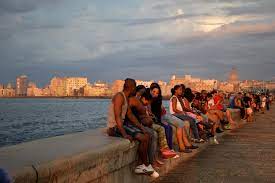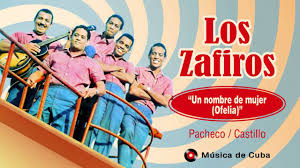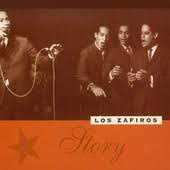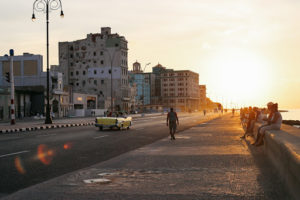THE CUBAN CITIES WITH THE LARGEST POPULATION ON THE ISLAND (I). PHOTOS.

In Cuba, cities are defined as populations of more than 20,000 inhabitants. It is a statistical criterion that takes into account only the population in the urban settlement delimited by the continuous built area, and not the entire population of the administrative demarcation (municipality). Of the 58 cities identified in the 2012 census, 57 constitute municipal seats, while the city of Havana corresponds to the territory of the Province of Havana, which is considered 100% urban and is made up of 15 suburban municipalities.
The most important Cuban cities ordered by their population, according to the most recent population census (2012) are:
LA HABANA
La Habana: 2.106.146

Havana is the capital and largest city of Cuba. The heart of the La Habana province, Havana is the country’s main port and leading commercial center. The city has a population of 2.1 million inhabitants, and it spans a total of 781.58 km2 (301.77 sq mi) – making it the largest city by area, the most populous city, and the fourth largest metropolitan area in the Caribbean region.
The city is the center of the Cuban government, and home to various ministries, headquarters of businesses, and over 100 diplomatic offices. In 2009, the city/province had the third-highest income in the country.
Contemporary Havana can essentially be described as three cities in one: Old Havana, Vedado, and the newer suburban districts. The city extends mostly westward and southward from the bay, which is entered through a narrow inlet and which divides into three main harbors: Marimelena, Guanabacoa, and Atares. The sluggish Almendares River traverses the city from south to north, entering the Straits of Florida a few miles west of the bay.
SANTIAGO DE CUBA
Santiago de Cuba: 431.272
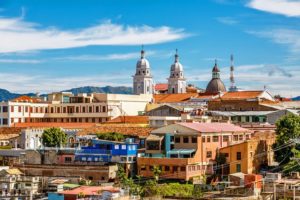
Santiago de Cuba is the second-largest city in Cuba and the capital city of Santiago de Cuba Province. It lies in the southeastern area of the island, some 870 km (540 mi) southeast of the Cuban capital of Havana.
The municipality extends over 1,023.8 square kilometers (395.3 sq mi), and contains the communities of Antonio Maceo, Bravo, Castillo Duany, Daiquirí, El Caney, El Cobre, El Cristo, Guilera, Leyte Vidal, Moncada and Siboney. Historically Santiago de Cuba has long been the second-most important city on the island after Havana and still remains the second-largest. It is on a bay connected to the Caribbean Sea and is an important seaport. In the 2012 population census, the city of Santiago de Cuba recorded a population of 431,272 people.
CAMAGUEY
Camagüey: 300.958

Camagüey is a city and municipality in central Cuba and is the nation’s third-largest city with more than 321,000 inhabitants. It is the capital of the Camagüey Province.
The symbol of the city of Camagüey is the clay pot or tinajón, used to capture rainwater and keep it fresh. Camagüey is also the birthplace of Ignacio Agramonte (1841), an important figure of the Ten Years’ War against Spain. A monument by Italian sculptor Salvatore Buemi, erected in the center of the area to Ignacio Agramonte, was unveiled by his wife in 1912. It is composed of an equestrian statue, reliefs in bronze that reveal fragments of the life of Agramonte, and a sculpture of a woman that symbolizes the motherland.
In July 2008, the old town was designated a UNESCO World Heritage Site, because of its irregular, maze-like city planning, its prominent role in early Spanish colonization and agriculture, and its rich architecture showing a variety of influences.
HOLGUIN
Holguín: 287.881

Holguín is a municipality and city in Cuba, and the capital of the Province of Holguín. After Havana, Santiago de Cuba, and Camagüey, it is the fourth largest city in Cuba.
Prior to 1976, Holguín was located in the province of Oriente. Before Pope Francis’s visit to the United States, in September 2015, he visited Cuba, and one of his stops was at the Diocese of Holguín to, among other things, commemorate the location where Christopher Columbus landed.
The municipality is divided into repartos or barrios. The old municipality was more extense, and in 1940 included: Aguarás, Aguas Claras, Alcalá, Arroyo Blanco del Sur, Báguanos, Cabezuelas, Cacocum, Calderón, Camazán, Cauto del Cristo, Corralillo, Cruces de Purnio, Damián, Floro Pérez, Gibara, Guabasiabo, Guayabal, Guirabo, Haticos del Purial, La Aguada, La Cuaba, La Palma, La Rioja, Las Calabazas, Managuaco, Melones, Norte, Omaja, Purnio, San Agustín, San Andrés, San Francisco, San Juan, San Lorenzo, Santa Rita, Sur, Tacámara, Tasajeras, Uñas, Uñitas, Velasco, Yareyal and Yayal.
At present time, some of the above are part of other municipalities, but the following still belong to Holguín: Aguas Claras, Guirabo, La Cuaba, Las Calabazas, Purnio, San Andrés, Yareyal.
GUANTANAMO
Guantánamo: 217.135

Guantánamo is a municipality and city in southeast Cuba and the capital of Guantánamo Province. Guantánamo is served by the Caimanera port near the site of a U.S. naval base. The area produces sugarcane and cotton wool. These are traditional parts of the economy.
The municipality is mountainous in the north, at Alejandro de Humboldt National Park, where it overlays the Sierra Maestra (mountains), and borders the Windward Passage of the Caribbean Sea in the south. It is crossed by the Bano, Guantánamo, Yateras, Guaso, San Andrés, and Sabanalamar rivers. The city is spread with a square plan and is crossed in the middle by the Carretera Central highway. Guantánamo Bay is a natural harbor south of it.
The municipality borders with El Salvador, Niceto Pérez, Caimanera, Yateras, Manuel Tames, and Sagua de Tánamo; this one in Holguín Province. It includes the villages of Argeo Martínez, Arroyo Hondo, Glorieta, Las Lajas, and Paraguay.
Prior to 1976 it was divided into the barrios and villages Arroyo Hondo, Baitiquirí, Bano, Bayate, Caimanera, Camarones, Caridad, Corralillo, Cuatro Caminos, Filipinas, Glorieta, Gobierno, Guaso, Hospital, Indios, Isleta, Jaibo Abajo, Las Lajas, Macurijes, Mercado, Ocujal, Parroquia, Palma de San Juan, Rastro, Tiguabos, and Vínculo. After 1976 reform part of municipal territory was split in the municipalities of El Salvador, Niceto Pérez, Caimanera, and San Antonio del Sur.
In 2004, the municipality of Guantánamo had a population of 244,603. With a total area of 741 km2 (286 sq mi), it has a population density of 330.1/km2 (855/sq mi).
UNITED STATES Naval Base:

About 15 km away from the city lies the Guantánamo Bay, a superior natural harbor that has been utilized by the United States since 1898, when it was captured from Spain in the Battle of Guantánamo Bay. In 1903 Cuba leased it to the U.S. as it had committed to in the Cuban–American Treaty of Relations, and remains the site of a US Navy base, as well as the Guantanamo Bay detention camp.
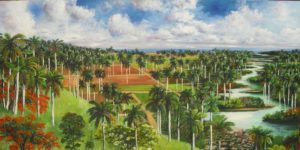
RECOMIENDENOS A SUS AMISTADES * PREFIERA A NUESTROS SPONSORS.

LAS CIUDADES CUBANAS CON MAYOR POBLACIÓN DE LA ISLA (I). FOTOS.

En Cuba, las ciudades se definen como poblaciones de más de 20.000 habitantes. Es un criterio estadístico que toma en cuenta únicamente la población del asentamiento urbano delimitado por el área edificada continua, y no toda la población de la demarcación administrativa (municipio). De las 58 ciudades identificadas en el censo de 2012, 57 constituyen cabeceras municipales, mientras que la ciudad de La Habana corresponde al territorio de la Provincia de La Habana, que se considera 100% urbana y está conformada por 15 municipios suburbanos.
Las ciudades cubanas más importantes ordenadas por su población, según el censo de población más reciente (2012) son:
LA HABANA
La Habana: 2.106.146
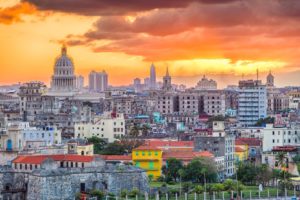
La Habana es la capital y ciudad más grande de Cuba. El corazón de la provincia de La Habana, La Habana es el principal puerto del país y el principal centro comercial. La ciudad tiene una población de 2,1 millones de habitantes y abarca un total de 781,58 km2 (301,77 millas cuadradas), lo que la convierte en la ciudad más grande por área, la ciudad más poblada y la cuarta área metropolitana más grande de la región del Caribe.
La ciudad es el centro del gobierno cubano y alberga varios ministerios, sedes de empresas y más de 100 oficinas diplomáticas. En 2009, la ciudad / provincia tenía el tercer ingreso más alto del país.
La Habana contemporánea se puede describir esencialmente como tres ciudades en una: La Habana Vieja, el Vedado y los distritos suburbanos más nuevos. La ciudad se extiende principalmente hacia el oeste y el sur desde la bahía, a la que se accede por una ensenada estrecha y que se divide en tres puertos principales: Marimelena, Guanabacoa y Atares. El lento río Almendares atraviesa la ciudad de sur a norte, ingresando al Estrecho de Florida a unas pocas millas al oeste de la bahía.
SANTIAGO DE CUBA
Santiago de Cuba: 431.272

Santiago de Cuba es la segunda ciudad más grande de Cuba y la capital de la provincia de Santiago de Cuba. Se encuentra en la zona sureste de la isla, a unos 870 km (540 millas) al sureste de la capital cubana de La Habana.
El municipio se extiende sobre 1.023,8 kilómetros cuadrados (395,3 millas cuadradas) y contiene las comunidades de Antonio Maceo, Bravo, Castillo Duany, Daiquirí, El Caney, El Cobre, El Cristo, Guilera, Leyte Vidal, Moncada y Siboney. Históricamente, Santiago de Cuba ha sido durante mucho tiempo la segunda ciudad más importante de la isla después de La Habana y sigue siendo la segunda más grande. Está en una bahía conectada al mar Caribe y es un importante puerto marítimo. En el censo de población de 2012, la ciudad de Santiago de Cuba registró una población de 431,272 personas.
CAMAGUEY
Camagüey: 300.958

Camagüey es una ciudad y municipio en el centro de Cuba y es la tercera ciudad más grande del país con más de 321.000 habitantes. Es la capital de la provincia de Camagüey.
El símbolo de la ciudad de Camagüey es la olla de barro o tinajón, que se utiliza para captar el agua de lluvia y mantenerla fresca. Camagüey es también el lugar de nacimiento de Ignacio Agramonte (1841), una figura importante de la Guerra de los Diez Años contra España. Un monumento del escultor italiano Salvatore Buemi, erigido en el centro de la zona a Ignacio Agramonte, fue inaugurado por su esposa en 1912. Está compuesto por una estatua ecuestre, relieves en bronce que revelan fragmentos de la vida de Agramonte y una escultura. de una mujer que simboliza la patria.
En julio de 2008, el casco antiguo fue designado Patrimonio de la Humanidad por la UNESCO debido a su planificación urbana irregular y laberíntica, su papel destacado en la colonización y la agricultura españolas tempranas y su rica arquitectura que muestra una variedad de influencias.
HOLGUIN
Holguín: 287.881
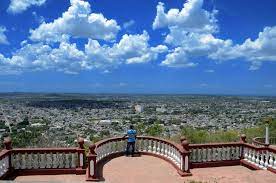
Holguín es un municipio y ciudad de Cuba, y la capital de la provincia de Holguín. Después de La Habana, Santiago de Cuba y Camagüey, es la cuarta ciudad más grande de Cuba.
Antes de 1976, Holguín estaba ubicado en la provincia de Oriente. Antes de la visita del Papa Francisco a Estados Unidos, en septiembre de 2015, visitó Cuba, y una de sus paradas fue en la Diócesis de Holguín para, entre otras cosas, conmemorar el lugar donde desembarcó Cristóbal Colón.
El municipio se divide en repartos o barrios. El antiguo municipio era más extenso, y en 1940 incluía: Aguarás, Aguas Claras, Alcalá, Arroyo Blanco del Sur, Báguanos, Cabezuelas, Cacocum, Calderón, Camazán, Cauto del Cristo, Corralillo, Cruces de Purnio, Damián, Floro Pérez, Gibara , Guabasiabo, Guayabal, Guirabo, Haticos del Purial, La Aguada, La Cuaba, La Palma, La Rioja, Las Calabazas, Managuaco, Melones, Norte, Omaja, Purnio, San Agustín, San Andrés, San Francisco, San Juan, San Lorenzo , Santa Rita, Sur, Tacámara, Tasajeras, Uñas, Uñitas, Velasco, Yareyal y Yayal.
En la actualidad, algunos de los anteriores forman parte de otros municipios, pero aún pertenecen a Holguín: Aguas Claras, Guirabo, La Cuaba, Las Calabazas, Purnio, San Andrés, Yareyal.
GUANTANAMO
Guantánamo: 217.135
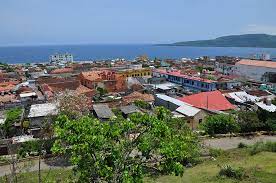
Guantánamo es un municipio y ciudad del sureste de Cuba y capital de la provincia de Guantánamo. Guantánamo es servido por el puerto de Caimanera cerca del sitio de una base naval estadounidense. La zona produce caña de azúcar y algodón. Estas son partes tradicionales de la economía.
El municipio es montañoso al norte, en el Parque Nacional Alejandro de Humboldt, donde se superpone a la Sierra Maestra (montañas) y limita con el Paso de Barlovento del Mar Caribe al sur. Lo atraviesan los ríos Bano, Guantánamo, Yateras, Guaso, San Andrés y Sabanalamar. La ciudad se distribuye en planta cuadrada y está atravesada en el medio por la Carretera Central. La bahía de Guantánamo es un puerto natural al sur de ella.
El municipio limita con El Salvador, Niceto Pérez, Caimanera, Yateras, Manuel Tames y Sagua de Tánamo; éste en la provincia de Holguín. Incluye los pueblos de Argeo Martínez, Arroyo Hondo, Glorieta, Las Lajas y Paraguay.
Antes de 1976 se dividía en los barrios y aldeas Arroyo Hondo, Baitiquirí, Bano, Bayate, Caimanera, Camarones, Caridad, Corralillo, Cuatro Caminos, Filipinas, Glorieta, Gobierno, Guaso, Hospital, Indios, Isleta, Jaibo Abajo, Las Lajas , Macurijes, Mercado, Ocujal, Parroquia, Palma de San Juan, Rastro, Tiguabos y Vínculo. Después de la reforma de 1976 parte del territorio municipal se dividió en los municipios de El Salvador, Niceto Pérez, Caimanera y San Antonio del Sur.
En 2004, el municipio de Guantánamo tenía una población de 244.603. Con una superficie total de 741 km2 (286 millas cuadradas), tiene una densidad de población de 330,1 / km2 (855 / mi2).
BASE NAVAL de Estados Unidos:

A unos 15 km de la ciudad se encuentra la Bahía de Guantánamo, un puerto natural superior que ha sido utilizado por Estados Unidos desde 1898, cuando fue capturado a España en la Batalla de la Bahía de Guantánamo. En 1903 Cuba lo arrendó a los Estados Unidos como se había comprometido en el Tratado de Relaciones Cubano-Americanas, y sigue siendo el sitio de una base de la Marina de los Estados Unidos, así como el campo de detención de la Bahía de Guantánamo.
Agencies/ Wiki/ Excerpts/ Extractos/ Internet Photos/ Arnoldo Varona/ www.TheCubanHistory.com
THE CUBAN HISTORY, HOLLYWOOD.
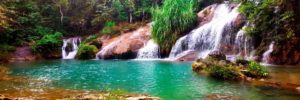
RECOMIENDENOS A SUS AMISTADES * PREFIERA A NUESTROS SPONSORS.






